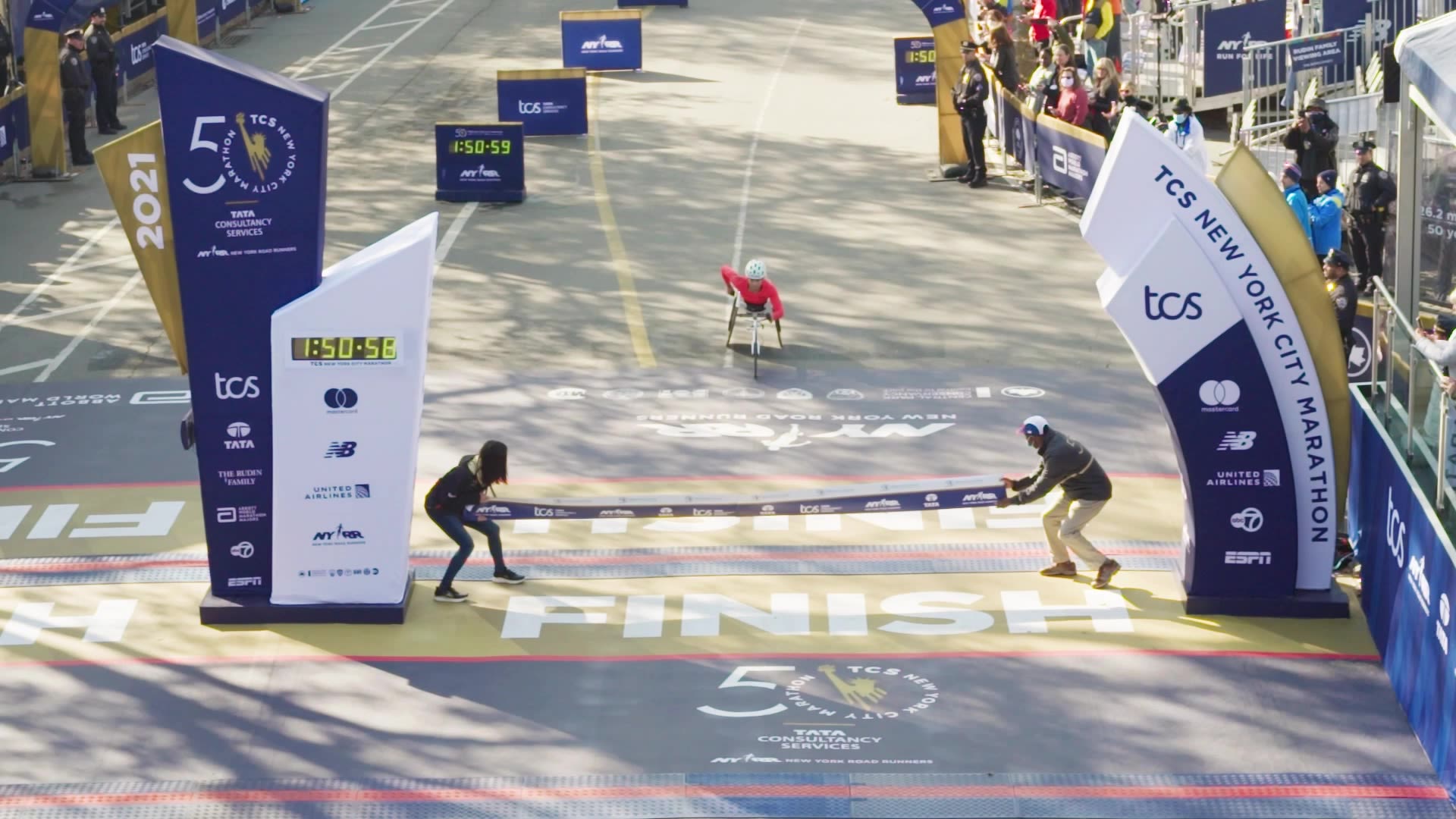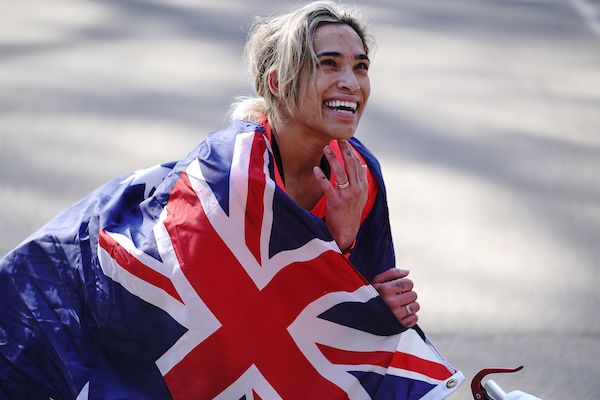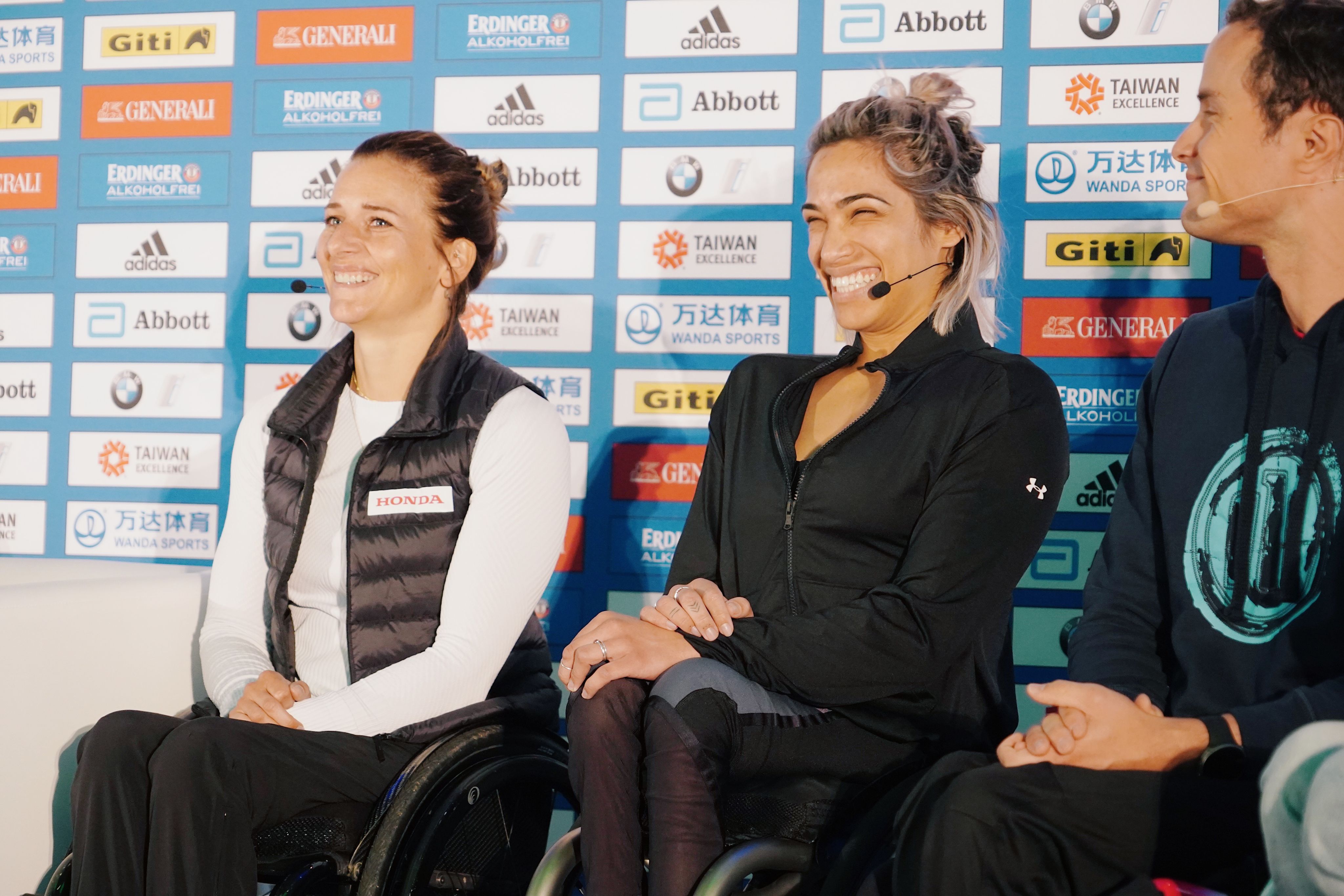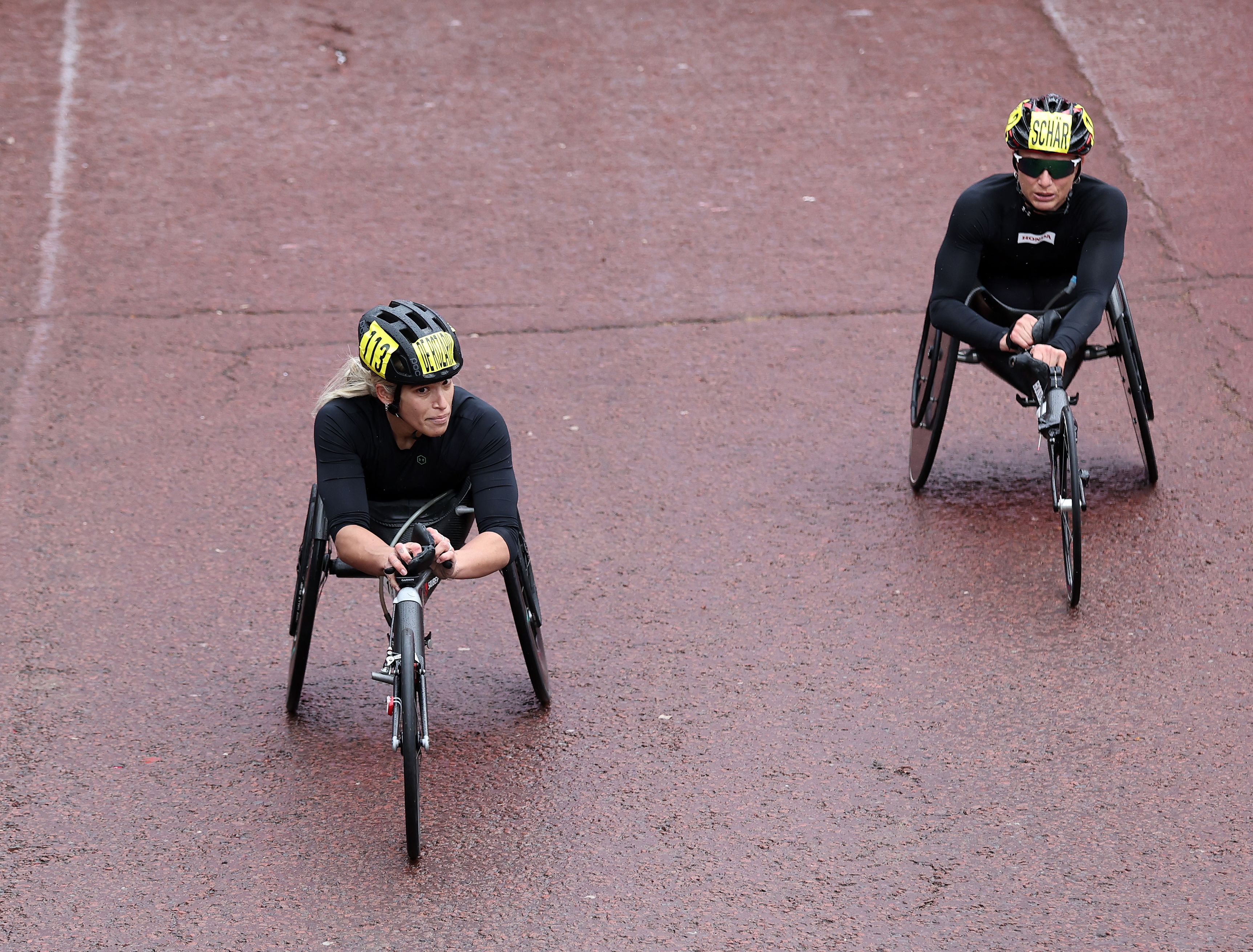MODEL
PROFESSIONAL
Paralympic gold medals and a world-first as the inspiration for a Barbie doll. Can Australia’s Madison De Rozario add an AbbottWMM Series to her highlight reel?

As we approach the fall races in the AbbottWMM series, a trio of different women are locked at the top of the leaderboard in the battle to claim the Series XV title.
Manuela Schär, Susannah Scaroni and Madison de Rozario have won one Major each so far this year.
Schär took the Tokyo title in March with a dominant display, before Scaroni struck in Boston to launch the defence of the Majors crown she claimed in 2022.
Then came the turn of Madison De Rozario. The 29-year-old Australian inserted herself into the conversation in London, outsprinting her rivals down The Mall to take the tape.
It was a second win in London for the woman from Perth, adding to her 2018 victory there. De Rozario also triumphed in New York City in 2021, the same year she became Paralympic marathon champion in a nail-biting finish with Schär in Japan.
De Rozario is box office. The sunshine of Australia’s easy-going west coast is in her soul. She brings a mega-watt smile and ready laughter to every conversation, and was immortalized as a Barbie doll in 2019. But these attributes are matched with an iron will to win, as she proved when she out-sprinted Schär by a hair’s breadth at the Tokyo Games, and again in her most recent triumph in London.

The rivalry between this top clutch of racers is matched only by the friendship they have away from the road.
Camaraderie and cut-throat competition among a group of athletes are rarely common bedfellows, but the combination of the two in the community she travels the world with is something De Rozario cherishes.
“On the road, people will make the most ruthless moves you could imagine and, in the same breath, still be your friend while doing it,” she says.
“It’s this really interesting dynamic and I love it. We race so many marathons a year, we spend so much time together as a group and you develop such incredible relationships, and because we all have the same job, it’s an easy thing to bond over and create that relationship.”
And the switch between off-road friendship and on-course rivalry can even surface during the heat of battle, as De Rozario discovered in April.
“In London, I got a flat a tyre. I run sealant in my tyres, so they are able to re-seal when it’s a very small puncture. So with 10 kilometers to go, I thought was out of the race, and I began to pull out.
“The genuine concern from the other three, it takes you back, because they are doing anything to get ahead, and it’s brutal and ruthless. No one really talks, and they are all taking it incredibly seriously, but the minute I thought I was out, it switched to all three of them saying ‘I’m so sorry I don’t have a spare tyre’. You switch immediately back to the love and respect for the person.
“There is so much respect for each other but also the event, and it’s our job to go out there and do everything we can to cross that finish line first. You owe it to the race and everyone who has gone before us to take that as seriously as possible, and that means racing your very good friends sometimes.”
Of the three amigos, only De Rozario has not hoisted aloft the series silverware before. She now has the chance to do it if she can finish on top of the heap following the TCS New York City Marathon in November. Berlin and Chicago precede that finale, and she has not tasted victory on either course so far, but now settled in her new racing chair, she is aiming to be ready for battle when September 24 arrives.
“There is so much respect for each other but also the event, and it’s our job to go out there and do everything we can to cross that finish line first”

One thing guaranteed in Berlin is that it will be fast, so will it suit her? De Rozario is nothing if not honest.
“I’m good at holding a consistent speed,” she says. “I get off the line so painfully slow, and if there’s a quick surge, I’ll be off the back of that in no time. Coming off a corner, I’m shocking at that. If I don’t hit the corner first, I will be off the back of the pack and spending a lot of time chasing, but once I have that speed and momentum, I’m able to hold that quite well, it’s probably my biggest strength.”
It’s also clear that De Rozario has made it her business to study and interrogate every facet of the sport in her quest for continued improvement, at a time when change is gathering pace in the technology and sports science being tapped into by the world’s best athletes.
“For the marathon, we’re moving out of that ‘we’re a growing sport’ mind set to being an established sport,” she says.
“It’s an interesting time to be in because the technology is changing drastically.
“The actual chair (she is now using a chair from Orthotec, the Swiss manufacturer behind Marcel Hug’s racing machine), the frames, the wheels; those are the things you see from the outside, but also what kind of tyre you run, what tyre pressure you need on different courses; the nuance and detail is constantly evolving, and you get small gains out of that.

“The science behind the approach to training is changing as well,” says De Rozario, who is coached by the great Australian Louise Savage.
“When she was training it was her and her coach. Now I have a 10-person performance team behind me. I have a dietician, a bio mechanist, a physiologist, sports psychologist. There are so many resources we haven’t had in para sport before.
“We’re coming to a time where that is becoming the norm, so we are going to see improvements on the track and on the road. That creates this environment where everyone is pushing what they can do, and they are bringing those results to the world stage. It’s a growing sport that has hit its stride on the marathon circuit.”
It’s a circuit that could be expanding with the candidacy of Sydney and Cape Town to join the Majors family. The prospect of a Major on home territory is one that excites her.
“I’ve lived there for eight years and never raced Sydney,” she says. “It’s the week before Berlin but I am curious to see what it’s like - a home marathon doing everything to be a Major, I want to be involved in that.”
As the sport expands and the racing opportunities continue to grow, after 17 years, the motivation is still blazing for De Rozario, who foresees the days of racers shifting up and down the distance scale coming to an end, and more marathon specialists focusing on 26.2 miles alone.
“I don’t think that’s going to be possible for much longer,” she says. “Up to this point, we’ve been able to go between the two (short track racing and marathons), and in terms of training, we spend the bulk of year in a big marathon block and do very little track, just keeping one speed session per week in, so that you stay switched on to what that process feels like.
"Then as you begin to taper into a Paralympics or world championships, you bring speed back into it and rely on longevity of your fitness, and you just have to have faith that come marathon morning at the very end of the Games, you have everything that you had. But I think the marathon is becoming so competitive and so intense that we owe it to the event to begin to specialize in it more than we already do.”

